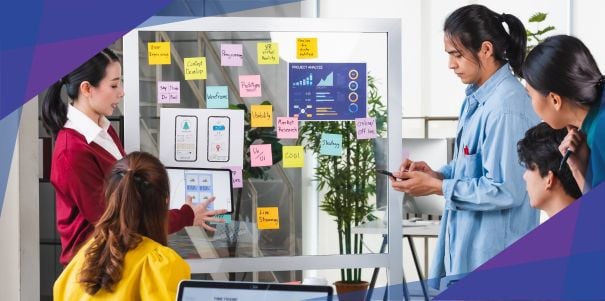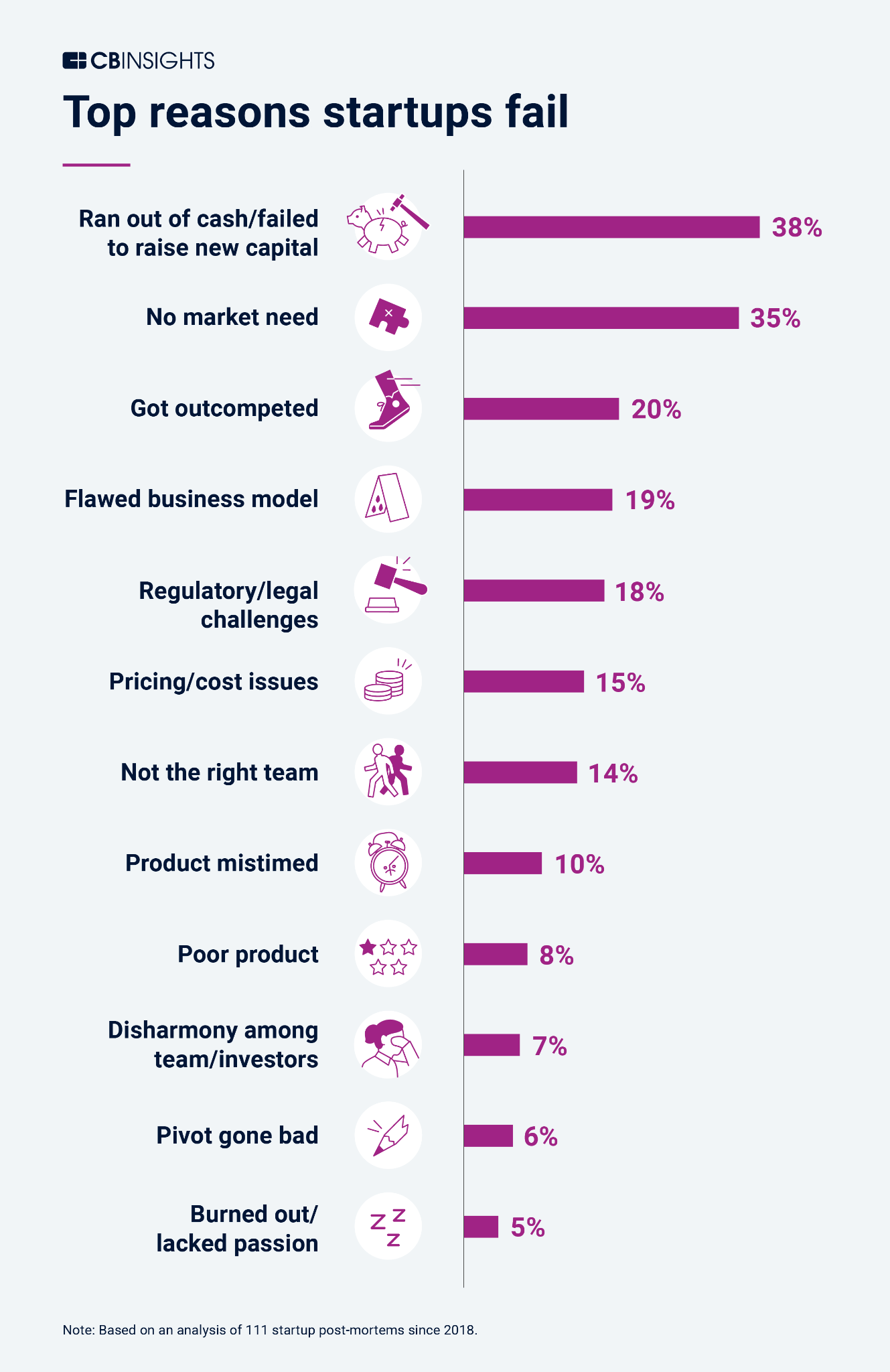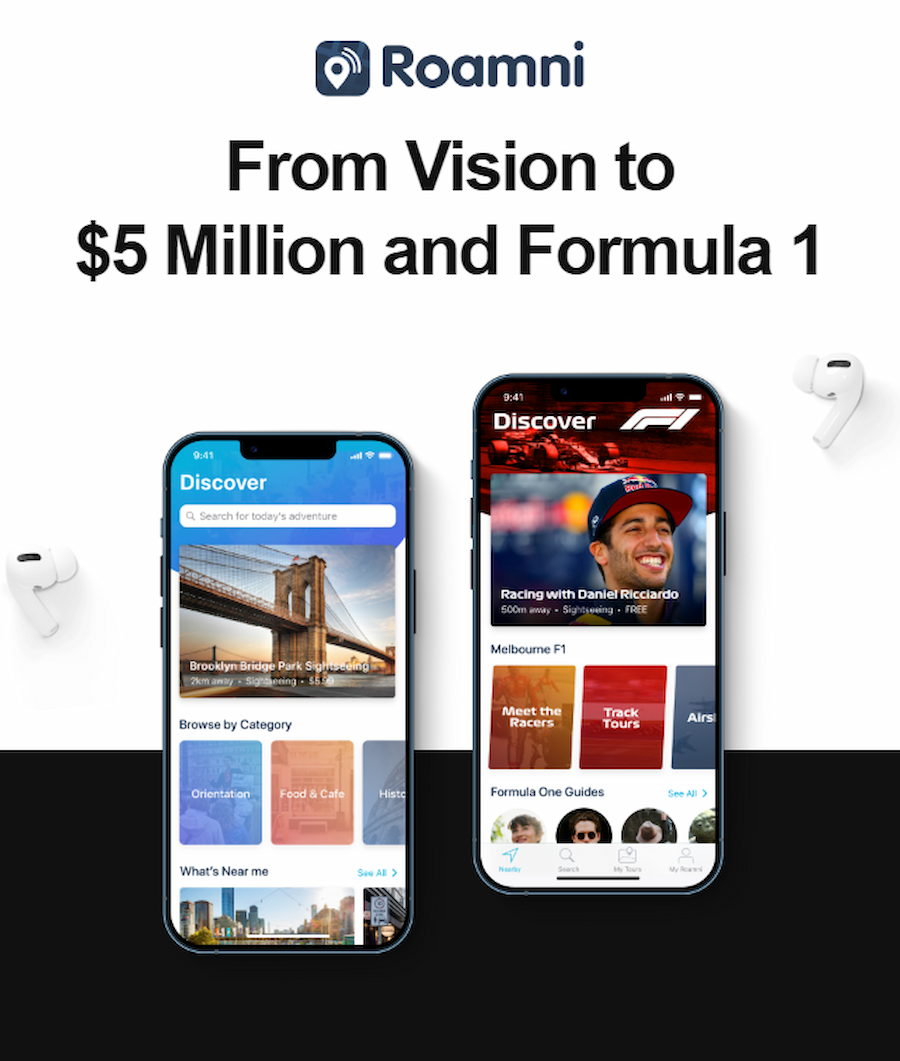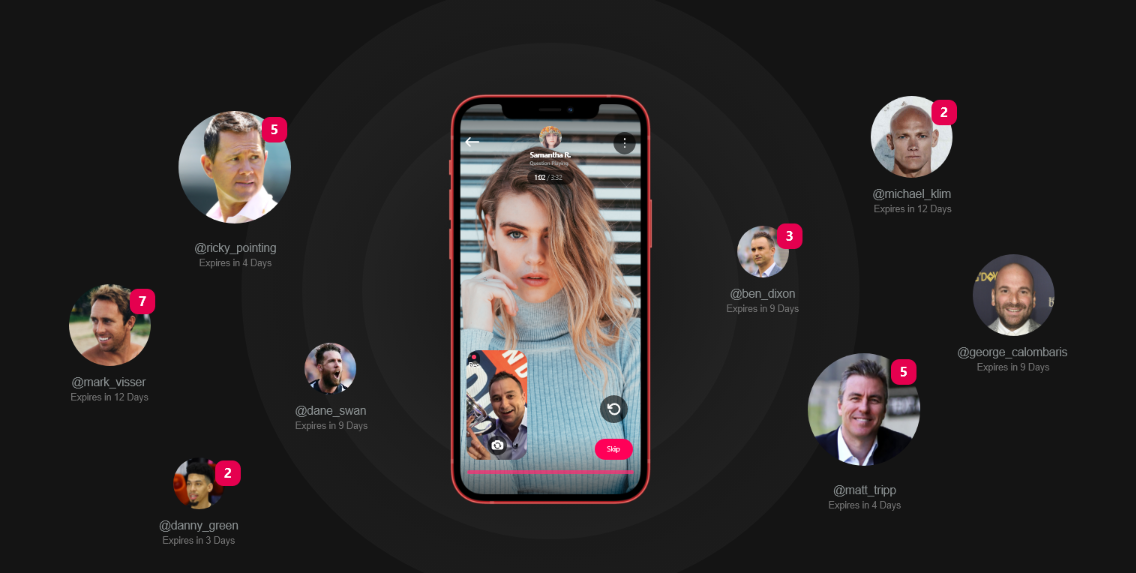A 6-Step Guide to a Safe and Secure Healthcare App Development

Imagine healing at the push of a button.
As of now, that’s only possible in science fiction series like Star Trek. But healthcare apps have come pretty close to making this miracle a reality.
If you’re considering building a mobile app, you can make healthcare more accessible to doctors and patients. This can improve the efficiency and effectiveness of hospital administration, fitness tracking, and other related endeavors.
In fact, interest in digital health is on the upswing. According to Grand View Research, these solutions generated around $32 billion in global value in 2023. But with great rewards come great risks. Developing a substandard healthcare app can lead to serious life and legal consequences.
To get the best possible outcome and ensure your app is compliant-ready, read this article on healthcare app development.
Your guide to healthcare app development
- What is healthcare app development?
- Why should you explore healthcare app development?
- Balancing risks and rewards in healthcare app development
- 6 Steps in building a risk-free and effective healthcare app
What is healthcare app development?
Healthcare app development is the process of creating applications designed to help users manage medical or fitness-related concerns. These apps can function on different platforms like mobile phones, laptops, desktops, and tablets. Some of the best healthcare app development companies, like Atta Systems, Exyte, and Appetiser Apps, have helped people and businesses develop tools to make healthcare access more convenient.
Knowing that healthcare app development is lucrative may not be enough incentive for you to consider this alternative growth engine. So, is it worth pursuing? Let me explain further.
Why should you explore healthcare app development?
In an age where unique startup funding options are available, you can worry less about money and focus on your vision or legacy. A world-changing vision could start with simple questions, such as:
- 🎯 When you got sick, did digital technology help you contact a doctor quickly and without hassle?
- 🎯 Would you want to use apps to solve similar problems for other people?
Healthcare apps are transforming the way medical professionals and patients engage with the healthcare system.
💡 Where there were delays and discomforts before the advent of cutting-edge software, applications for healthcare now bring efficiency, convenience, and personalization to the forefront.
How healthcare apps benefit doctors and other healthcare professionals
- ✅ Enhanced efficiency. Automates scheduling and communication tasks, helping medical doctors focus on direct patient care.
- ✅ Improved diagnostic accuracy. Provides access to mobile analytics, which leads to more informed decision-making and better treatment plans and outcomes.
- ✅Remote collaboration. Enables healthcare professionals to consult with peers across different locations, enhancing the quality of care.
- ✅ Stress reduction. Reduces administrative burdens, alleviating stress and burnout among medical staff.
- ✅ Better resource management. Internet of Things (IoT) integration allows for real-time tracking and optimal use of hospital equipment, reducing overall healthcare costs.
How healthcare apps benefit patients
- ✅ Increased accessibility. Provides convenient access to healthcare services, especially for those in remote areas or with limited mobility.
- ✅ Personalized care. Offers tailored treatment plans based on individual health data and preferences.
- ✅ On-demand services. Facilitates faster access to care through virtual consultations and medication delivery without the need for in-person visits.
- ✅ Improved health management. Empowers patients to monitor their health metrics, manage chronic conditions, and make informed decisions about their care.
- ✅ Secure and convenient payments. Simplifies the payment process with in-app purchases, making healthcare more accessible and less stressful.
Balancing risks and rewards in healthcare app development
There is definitely a lot of rewards awaiting the next best healthcare app.
However, to take advantage of the digital health industry, it is best to balance optimism with awareness of risks.
Before we discuss the details of the healthcare app development process, it’s important to note that healthcare apps are a high-risk, high-reward venture. Here’s why:
- 🔴 71% of healthcare and medical apps have at least one serious vulnerability that could lead to a breach of medical data.
- 🔴 36% of healthcare facilities reported an increase in medical complications owing to ransomware attacks.
At the end of the day, we’re dealing with a highly sensitive and important aspect of human lives – and while they can lead to massive incomes, they can also expose app developers and publishers to potential legal issues.
Our app industry experts have learned that poorly designed healthcare apps can lead to the following outcomes:
- 🔴 Exposure of patient data to unscrupulous people like hackers, etc.
- 🔴 Physical harm to patients due to substandard app quality
Now that you know how important it is to balance the risks and rewards, let’s get into the meatiest part of the article.
6 Steps in building a risk-free healthcare app
To ensure your healthcare app is safe and useful as possible, our product managers and app developers recommend the following steps when building your app:
- Conduct research on the legal and business landscape
- Choose the type of healthcare app you want to develop
- Prioritize your app’s features based on industry-tested frameworks
- Create app designs based on your prioritized features
- Develop your healthcare app based on refined designs
- Launch and market your app
The steps below will help you deal with multiple factors that affect healthcare app development, such as legal implications, the overall business environment, programming tools, and specific features to include during the build phase.
1. Conduct research on the legal and business landscape
Legal issues and a lack of market demand for your healthcare app are the two major problems your healthcare app could encounter.
To address these two major concerns, you must conduct the following:
- Market research
- Competitor analysis
- Study of the legal landscape
Without a careful study of these three, your app development costs might increase due to market failure and litigation fees. Studying the legal landscape is critical, especially given the complex regulatory environment for healthcare apps. This includes understanding HIPAA requirements, FDA regulations, and other relevant laws.
Market research
Market research, on the other hand, is all about determining what issues patients or healthcare organizations have that your app can address. This ensures that the app you will develop fulfills an actual market need, increasing your chance of success. A study shows that around 40% of startups fail because of the lack of market need for their products or services.

Source: CBInsights.com
In conducting interviews for market research, be especially careful when asking patients about sensitive medical conditions. For example, if your app aims to reduce obesity by promoting better eating habits, you can ask potential users questions like: “What factors increase your food intake?” This question is the more courteous alternative to “Why do you eat too much?”
Questions that rub people the wrong way could make them defensive, reducing your access to genuine answers. Responses that don’t reflect people’s actual thoughts could create a mismatch between your app’s features and the needs of your target market, reducing your chance of success.
After conducting your interviews, remember to get your respondents’ contact details. To encourage them to provide their personal information, give them incentives to leave their phone number, email, or social media profile. These incentives could include early access to your app after launch and freebies to access advanced app features.
After all, you will need all your respondents’ contact information in the latter stages of the healthcare mobile app development process.
Competitor research
Your target market is just one component of the business landscape where your app will operate. The other vital element is your set of competitors.
Competitor research answers the following basic questions:
- What healthcare apps are available out there?
- How can you improve upon them, even slightly?
One of the safest bets is to develop a healthcare app similar to other apps in many respects except in certain features. For instance, your app may resemble many competitor apps but has slightly improved features like more user-friendly interfaces, attractive app icon designs, etc.
Having rivals in the space means a solid demand for that sort of health app. Adding little innovations can help you edge ahead of the competition without spending too much on development.
Study the legal landscape
A survey of the laws and governmental systems of your target market’s jurisdiction can help you avoid costly legal proceedings or regulatory bottlenecks.
There is an interesting study that indicates how much app developers pay if they break some laws related to healthcare apps. The U.S. Department of Health and Human Services mentions that if a poorly-made app fails to protect medical records from hackers and other malignant players, around $400 per record exposed will be lost in lawsuits and other expenses.
Check out all the laws and regulations in the countries where your app users will be based so you can answer the following key questions:
- Do their legal systems make app developers liable for any harm intentionally or unintentionally done to users due to the app’s usage?
- What remedies are available in case you get exposed to lawsuits?
Answering questions like these ensures that your app design minimizes your legal exposure. The video below provides more information on other relevant legal and ethical issues related to digital health.
Source: YouTube Channel of Fredrikson Law Firm
If you’re not very savvy about legal research, many law firms provide consultations online, so you don’t have to spend money on food and fuel to move from Point A to Point B.
💡 We have a comprehensive guide on how to patent an app idea and whether it’s even worth pursuing if you want to explore the legal aspects of developing your app idea.
2. Choose the type of healthcare app you want to develop
Based on your assessment of the target market, your competitors, and the legal landscape, you are in a better position to choose whether your app will cater to healthcare professionals or patients.
Whatever you choose, focus is key. We strongly recommend focusing on one group to help, at least initially. This simplifies the app design and development process, lowering costs in the long run.
Also, in deciding on this matter, determine which app type:
- Yields the maximum return on investment for your app
- Minimizes your legal exposure to a tolerable level
- Enables you to deal with healthcare issues you’re passionate about
3. Prioritize your app’s features based on industry-tested frameworks
Now that you know what kind of healthcare app you want to develop, it’s time to think of features your app will have.
Step 3 is all about focus. From the dozens of possible features you can add to your healthcare app, which ones will make it to the design and development phases?
You have two filters you can use to prioritize your healthcare app’s features:
- The MVP way of building apps
- Your findings on the business and legal landscape (Step 1)
The MVP way of building apps
The framework that we at Appetiser Apps use is the minimum viable product.
MVP is shorthand for minimum viable product. For this article, an MVP means a healthcare app with just the most basic features, at least in the beginning. The MVP method of developing apps is a process of continuous improvement, where additional features are added after gathering feedback post-launch.
The MVP approach to app development ensures that your app gets to market quicker and at a relatively lower cost. In addition, you don’t run the risk of building an app with too many features but few interested users.
💡 To learn how to develop champion apps the MVP way, you can read our article on how to start lean with MVP app development.
If you prefer more dynamic and accessible content, the video below explains the MVP concept using typical product examples.
Source: The YouTube Channel of Crash Course
The MVP mindset eliminates the temptation to burden an app with excessive features to impress users.
In the spirit of keeping things simple, you may mimic the best of the industry and incorporate the following basic features in your healthcare app.
- ✅ Integration with health databases. Your app must be able to quickly import data from platforms like Google Fit, HealthKit, and Samsung Health. Utilize these platforms as data hubs for storing user vitals.
- ✅ Patient and doctor profiles. Ensure profiles are editable and detailed, making it easier for patients to select the right specialist.
- ✅ Telemedicine options. Include real-time video calls or messaging for remote care.
- ✅ Reminders and notifications. Provide timely updates on prescriptions and medicine intake, which can be time- or location-based.
- ✅ Data privacy and security features. Secure patient data with encryption, two-factor authentication, and other protocols to ensure privacy and trust. Features to protect user data must align with the laws and regulations of the jurisdiction where your healthcare app will operate.
This feature list is by no means exhaustive and definitive. For instance, you may not need telemedicine options if you’re just going to design an app for storing and accessing hospital records.
Things may also change as the digital health industry progresses.
However, the basic features I discussed serve as a solid foundation to accommodate other key features you should incorporate in the design and development stages. These extra features come primarily from your business and legal landscape research.
Your findings on the business and legal landscape
Remember your findings in Step 1?
If you’ve learned from your market, competitor, and legal research that you need extra features, add them to your list.
But keeping the MVP mindset in mind, add just one or two extra features. After all, once you launch your app, you’re still testing the market.
Of course, your feature list should include any features required by the laws and regulations of your healthcare app’s jurisdiction.
Here’s a rundown of the features you can add on top of the basic features in order of priority.
| Source of Feature | Priority | Absolutely Necessary? | Extent of Inclusion |
|---|---|---|---|
| Legal research findings | 1 | Yes | Include as many features as feasibly possible to ensure maximum legal protection |
| Market research finding | 1 | Yes | Pick 1 or 2 features |
| Competitor research finding | 2 | No | Pick 1 or 2 features |
Copying competitor apps
Analyzing competitor healthcare apps can offer insights into what might be commercially viable. However, directly copying an app can expose you to legal risks due to potential intellectual property infringements and may result in a lack of market differentiation, particularly if you’re a new entrant.
Instead of copying, you should focus on understanding competitor strengths and weaknesses and innovating from there. Merely borrowing features or making slight visual modifications is insufficient to avoid legal challenges–it can still violate intellectual property rights. It’s crucial to seek legal advice before incorporating any similar elements.
Ultimately, the key to devising the ideal list of features for app design and development is striking a balance between the MVP mindset and your findings regarding the industry and the legal context.
But if you’re having trouble with this phase of the healthcare app development process, simply book a free consultation with us and let us help you get the ball rolling towards design and development.
4. Create app designs based on your prioritized features
After coming up with a list of your healthcare app’s features, it’s time to translate them into visual outputs called app designs.
Now, you may wonder why you don’t have to go straight to coding the features in your list.
Creating app designs help you save time and money by giving you an app that looks and feels like the real thing, but without the functionalities. An app design is like a clay model of a car with all the interior and exterior parts, but where the engine is absent. This mock-up version of your app helps you test features and add or delete as you please without spending too much time and money editing lines of code.
App designs come in many forms. But at Appetiser Apps, we prefer to use prototypes. They range from sketches to visual outputs that closely resemble functioning apps. These designs are the visual embodiment of the features you created in Step 3.
The short video below shows what a prototype looks like.
Source: YouTube Channel of uxpeak
What makes prototypes powerful is their ability to attract funding. Our clients Roamni and Vello have proven this when they attracted million-dollar investments through our prototypes.


5. Develop your healthcare app based on refined designs
Once you’ve completed the app design process, it’s time to turn it into a working app.
Two basic aspects are at play in developing your healthcare app: technical and legal.
Technical aspect
The technical aspect involves basically two things:
- ✅ Choosing your app’s host platform
- ✅ Selecting your programming tools
- ✅ Determining the ideal app development methodology
Choosing your app’s host platform
Though you can develop healthcare apps for desktops and laptops, we highly recommend building them for mobile devices.
Here’s why.
Healthcare applications function best when connected to the internet. After all, key healthcare app features like real-time database updates and video calls are only possible through online compatibility.
Given that most of the world’s internet users access cyberspace through a mobile phone, it’s logical to cater to their needs. And in the realm of mobile devices, two platforms reign supreme: Android and iOS.
Source: StatCounter Global Stats – OS Market Share
Now, from these two operating systems, how do you know which platform to develop for?
To answer this, I compared the advantages and disadvantages of Android and iOS.
Pros and cons of Android vs. iOS
| Platform | Pros | Cons |
|---|---|---|
| Android |
|
|
| iOS |
|
|
Choosing between Android and iOS for healthcare app development depends on your goals for setting up an app business, target audience, app functionality, and the development team’s expertise. Android offers wider market reach and flexibility, while iOS provides superior quality control and seamless integration with cutting-edge health hardware.
Selecting your programming tools
When developing a healthcare app, choosing the right tools is crucial for success.
For Android app development, the primary programming languages are Java and Kotlin, with Google favoring Kotlin.
We also prefer using Kotlin when building apps that address business and social challenges. Hence, this tool can be an excellent choice for healthcare applications as well. Whether you’re using a Mac, Windows PC, or Linux computer, you can run Kotlin and Java to create your app.
Source: YouTube Channel of Fireship
For iOS app development, the landscape is a bit different.
While Objective-C was once the dominant language, Swift has quickly risen to prominence since its introduction by Apple in 2014.
Swift is now considered the future of iOS development, offering modern features that make it ideal for creating robust healthcare apps.
Source: YouTube Channel of Fireship
Determining the ideal app development methodology
After you’ve determined your healthcare app’s build tools and host platform, it’s time to identify the process you will follow to build your digital solution.
Whether you’re developing for Android or iOS (or both, in the case of hybrid apps), you need to choose the right development methodology that saves time and money while ensuring your app closely matches the needs of the market.
The best method that fits the criteria mentioned is Agile development. First promoted massively in 2001, Agile has come to epitomize speed, quality, and build flexibility.
Unlike the waterfall method, which resembles an assembly line where apps are built once and shipped, Agile accommodates repeated application improvements during development.
To best describe Agile, imagine an automobile assembly line where, at the end of the line, a random person can drive the car and recommend improvements. The car then goes back to the the line, where factory workers will add the new parts as recommended by the person. At the end of the line, the car will again undergo testing, with another person making recommendations.
This feedback-improvement loop continues until the car is almost perfect. Only then will it leave the factory.
Now imagine that car as your healthcare app and the factory workers as your developers. With Agile, your healthcare app will undergo frequent improvements during the development process, as a sample set of users make recommendations based on interactions with the digital product. Only after many refinements will you market and launch your app.
Source: YouTube Channel of Simplilearn
As you can see, Agile helps you create a digital product that closely resembles what your potential market wants because user testing is integrated into the build process. For more information on using Agile to create your digital solution, check out our comprehensive article on Agile for app development.
After you’ve chosen your platform, tools, and methodology, you can now build the features and front-end of your healthcare app, taking into consideration your feature list in Step 3.
But when building your healthcare app, it is not enough to ensure that its features work properly. You must also ensure that its features minimize your exposure to legal issues. This is where the legal aspect of healthcare app development comes in.
Legal aspect
Though laws vary depending on your target market’s area of jurisdiction, they all basically aim to do the following:
- Protect the health of your app’s users (most often patients)
- Safeguard your users’ data from any unauthorized persons
To ensure you address both concerns, you must ensure your app has data security features and disclaimer content.
Data security features
To protect user data in healthcare apps, it’s crucial to implement key security features such as:
- Encryption. Basically garbles data during storage and transmission to ensure no unlawful actor can make sense of it or use it effectively.
- Access barriers. Limits access based on user roles and requires the use of mutli-factor authentication.
- Legally-compliant data governance mechanisms. Sets up your app to ensure that data collection, storage, retrieval, and disclosure adhere to data security laws like America’s HIPAA and the European Union’s GDPR.
- Regular security updates. Continuously improves the way your healthcare app protects its components and data from malware that may render the whole system unusable.
- Educational content on data security. Informs and trains users to follow steps or keep mindsets to ensure that their data remains protected from unauthorized access.
Disclaimer content
Your healthcare app must contain an easily readable disclaimer, which is text indicating that you, as an app developer or publisher, are not responsible for specific harmful outcomes that may arise from using the app.
Disclaimers in this context also aim to protect you as an app developer or publisher.
But you must take note that the nature of disclaimers you can post in your app is dependent on the laws of the jurisdiction where your app will be used. This is where the thoroughness of your legal research in Step 1 can make an impact.
Taking into consideration relevant compliance requirements, and the nature of your healthcare app, you may add any combination of the following disclaimers:
- ✅ Medical expertise disclaimer. Clearly state that the app does not offer medical advice, diagnosis, or treatment. Users should consult a healthcare professional for any medical concerns.
- ✅ Limited liability due to imperfect operations. Disclaim any guarantees about the app’s total accuracy or reliability and limit your liability for any damages or losses from such app defects.
- ✅ Third-party content. If the app links to external content, make it clear that you are not responsible for the accuracy or content of those third-party sites.
- ✅ Intellectual property. State that the app and its content are protected by patents, copyright, or any other relevant legal devices.
- ✅ Governing law. Specify the jurisdiction that regulates any legal disputes related to the app.
- ✅ Changes in service contract. Reserve the right to update the terms of service without prior notice.
Source: YouTube Channel of Progress
6. Launch and market your app
After developing your app, it’s time to bring it out into the open.
You can launch your app on Google Play or the Apple App Store, which are the home of most of the world’s Android and iOS apps, respectively.
But merely publishing your app won’t be enough, even with techniques like app store optimization. There are millions of published apps on these online stores, making competition tight.
This is where the patients or healthcare professionals you interviewed during Step 1 come in handy. Aside from being the source of your inspiration, they can now become your first group of app users.
Reach out to these people through the contact details you acquired from them during interviews. If your app proves helpful and effective, they may refer it to colleagues. In this case, word-of-mouth is a powerful and free marketing tool that does your bidding.
You might also consider reaching out to medical device manufacturers in the future. Many devices they develop, like heart monitors, can be integrated into mobile apps. The possibility of your app’s cross-integration with other systems expands your potential user pool.
Whether the app you launch is totally free or you charge fees, you could benefit either way. Read our articles on earning money from free apps and app monetization strategies to learn more.
A healthy way to do healthcare app development
Building healthcare apps is a great way to generate revenue while helping out society in a massive way. However, the healthcare industry’s legal implications and sensitive nature make developing apps for this sector more challenging than usual.
That is why technical skills are not enough to choose a healthcare app development company. Healthcare industry experts or product strategists with extensive experience in this space are also necessary.
At Appetiser, you get the best of both worlds. Our product strategists and app developers have the technical know-how and business savvy to launch healthcare apps successfully and safely.
If you’re already involved with the healthcare sector or yearning to impact this industry, book a free consultation with us to discover ways to succeed through healthcare apps.

Jesus Carmelo Arguelles, aka Mel, is a Content Marketing Specialist by profession. Though he holds a bachelor’s degree in business administration, he also took courses in fields like computer troubleshooting and data analytics. He also has a wealth of experience in content writing, marketing, education, and customer support.


